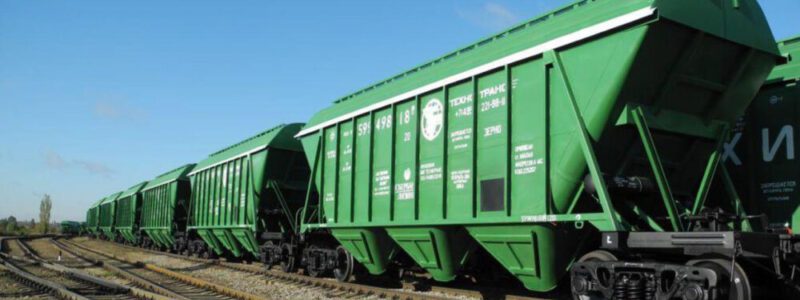
JSC “Ukrzaliznytsia” (UZ) for the period September 1-21, 2022 exported a record 2.25 million tons of grain cargo since the beginning of Russian aggression, which is 40.5% more than in August (1.6 million tons), the deputy director said Department of commercial work of UZ Valery Tkachev.
“We have set another record for the transportation of goods for export – 2.25 million tons, and this is only for the 21st day of September. I think that by the end of the month we will be able to reach the figure of 2.5 million tons, maybe we will try to transport up to 3 million tons,” Tkachev said during an online meeting with industry participants on Thursday.
According to him, the company achieved such growth due to the increase in transportation of agricultural products to three Ukrainian seaports, unblocked under the Istanbul grain agreements.
At the same time, he clarified that 1,516 thousand tons of agricultural products were delivered to ports for further shipments to third countries (for the whole of August, almost half as much – 795 thousand tons), while 732 thousand tons of grain were transported through land border crossings on the western border (in August – 805 thousand tons, -9%).
According to him, since the beginning of September, Ukrzaliznytsia has loaded a total of 1.89 million tons of grain cargo into wagons (for the whole of August – 1.74 million tons), which is 27.5% of the total loaded volume for this month of 6.32 million tons (9.28 million tons were shipped for export in August).
The representative of UZ also clarified that for September 1-21, the average daily loading of the company’s wagons amounted to about 90 thousand tons (in August – 56 thousand tons), reaching a record since the beginning of Russian aggression. So, on September 20, a record 122 thousand tons of agricultural products were loaded into the cars, on September 21 – 101.4 thousand tons, on September 19 – 112.8 thousand tons, on September 18 – 83.2 thousand tons.
“Now the loading through the network has also grown significantly, in recent days we have been loading more than 100 thousand tons per day. That is, the loading through the network is growing, and this is all thanks to the opening of our grain corridor,” the deputy director emphasized during the meeting.
Over the 21st day of September, Ukrzaliznytsia also exported 89.7 thousand tons of sunflower oil, as well as 132.7 thousand tons of all kinds of meal, through land border crossings and ports.
Tkachev clarified that over the specified period, the average daily handling of wagons of all types at border crossings sank by 6% – to 1,731 thousand wagons compared to 1,848 thousand wagons on average in August, while the transfer of grain wagons amounted to 536 wagons per day, which 14% more than the average for August (469 grain wagons per day).
According to him, the most intensive movement of wagons occurs through the Izov border crossing – 157 wagons / day, Batevo – 80 wagons / day, Yagodin – 48 wagons / day, Vadul-Siret – 47 wagons / day.
The UZ representative clarified that by September 21, the total queue of wagons of all nomenclatures at the border had decreased by 24% (or by 6.64 thousand wagons) compared to September 1, to 18.96 thousand units. from 25.12 thousand units At the same time, by September 21, there were 4.78 thousand grain wagons in the queue, while on September 1 this figure was 8.48 thousand wagons with grain (-44%, or by 3.69 thousand wagons).
Tkachev noted that the queue for the delivery of grain cargo, if you look at the availability of wagons and the daily delivery, is about nine days of waiting.
“At the same time, it is clear that we have crossings where the situation is more difficult, where you have to stand for 20 days, and there are places where there is no queue. In general, we have a queue of 9 days for the presence of a wagon fleet,” the UZ representative specified.
He also stressed that after the reorientation in early September of the main flow of grain cargo in the direction of Ukrainian seaports, UZ had the opportunity to additionally receive grain cargo for export through land border crossings on the western borders of Ukraine.